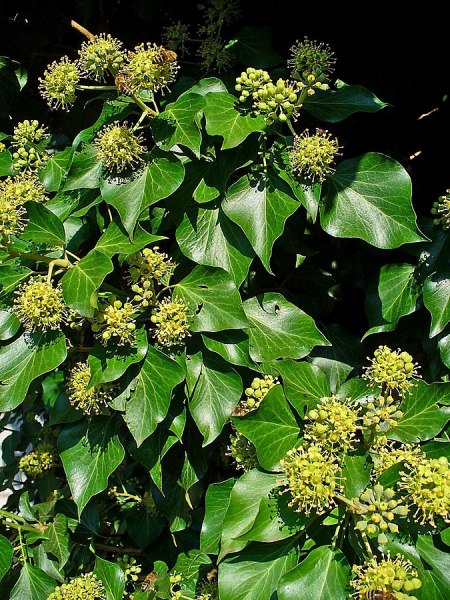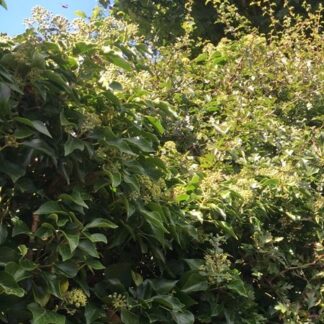Description
Araliaceae (family name)
Flowering time: September, October, November, December.
Growing information: EVERGREEN climbing SHRUB, a wild native which can grow to 10m (32 feet) by on average 3m (9feet10inches) in about 10 – 20 years. This long-lived climber surviving undisturbed for 100’s of years, provides a multitude of benefits including habitat for wildlife, as it clings to rock surfaces, old walls and trees. Contrary to an old myth, Ivy does not damage trees (it simply uses the tree to climb, its aerial roots able to hold onto bark while its stems are flexible and shift as the tree grows). Mature plants produce bushy, non-clinging branches which provide habitat for a multitude of wildlife. It can grow in any aspect and any soil and any pH (apart from extreme acid) and any location. It prefers moist but well-drained soil though is also drought-tolerant. It may be subject to leaf-spot (in drought). Fully hardy in the British Isles, it is found throughout Europe and Asia. Recent research has found it to be the most effective wall insulation for modern houses (keeping them cool in summer and warm in winter) with purpose-made wall-cling-structures, it can be a perfect Passivhaus addition. But is a perfect garden plant too looking great on walls and pergolas or alongside Clematis or roses.






